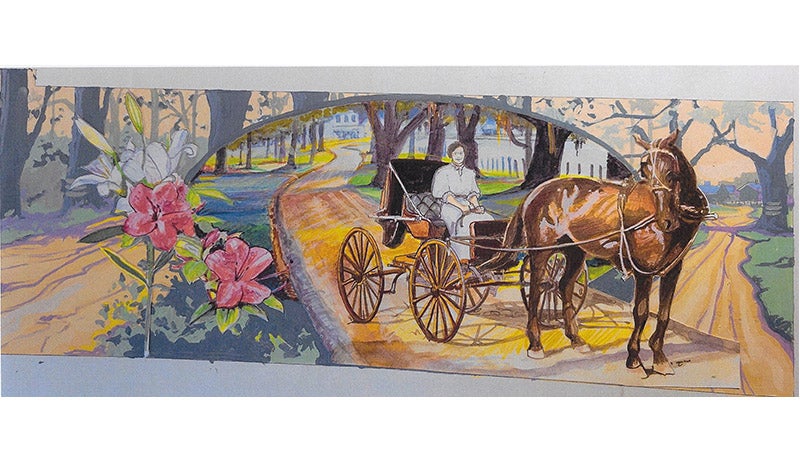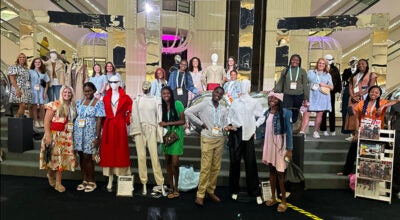New mural to pay tribute to Palmore
Published 7:30 am Monday, April 25, 2022

- One of the mural panels — this one featuring the likeness of the late Pat Palmore — that feature the history of the Three Notch Trail.
|
Getting your Trinity Audio player ready...
|
Downtown Andalusia’s 12th mural will pay tribute to the woman who led the effort to build local tourism with a series of murals.
The Andalusia City Council on Tuesday approved the design for a new mural, which tells the story of the Three Notch Trail.
The four panels depict the lives of Native Americans, who first used the trail; trade between European Americans and Native Americans; surveyors marking the notches along the trail; and settlers. The settler panel is a likeness of Pat Palmore as a pioneer.
Mrs. Palmore chaired the Mural Committee, which developed 11 downtown murals and had the 12th one in development at the time of her death in 2020. She was inspired to bring mural art to Andalusia in about 2010 when she and Councilwoman Hazel Griffin, along with their husbands, visited Chemainus, British Columbia. The little town (population 4,000) is home to more than 50 murals and considers its murals project the world’s leading community-driven art tourism experience.
After Mrs. Palmore pitched the idea of downtown murals to the Andalusia City Council, a Murals Committee was formed. She also worked to raise private funds for each of the murals, which depict different aspects of the community’s history.
Barbara Tyler, who worked with Mrs. Palmore on the projects, presented the new Three Notch Trail design to the council this week. Mrs. Tyler said the committee has private commitments for funding of most of the project, and requested that the city also participate. The council agreed to move forward with the contract for the mural once it has received confirmation of the private funding, and will fund a portion of the cost. It is tentatively scheduled for completion this summer.
Mrs. Palmore and the committee have worked with murals artist Wes Hardin on each of the projects, as well as the restoration of the mural-sized Snowdrift shortening advertisement.
The current project, The History of the Three Notch Trail, will be installed on the building currently occupied by the LAAC. The mural, also designed with the help of Hardin and based on research by Palmore and committee member Chuck Simon, features four panels depicting the evolution of the trail.
The trail was first used by Native Americans. Later, the Three Notch Road, or “Three Chopped Way,” was designated as such because of triple slashes on trees left by the surveyor marking the route for the Federal Road, according to a history of Alabama highways published by the Alabama Department of Transportation. While it was cleared for wagons in 1811, the primary purpose of the Three Notch Road was to expedite communication and transportation between military posts at Pensacola and Fort Mitchell. It eventually was used by settlers moving into the area.
The city’s other murals brought to life the Legend of Andalusia; documented timber, cattle, textile and utilities industries; memorialized the marriage of Hank and Audrey Williams; celebrated the history of the World Championship Domino Tournament; harkened the days when young people spent their spare nickels and dimes at the soda fountain; documented each of the county’s previous courthouses; and focused on early schools.
The most recent one, Parade on Three Notch, features 92 portraits of people who have lived in Andalusia, and one rather famous one who just visited – former Miss America Yolanda Betbeze, the first Miss Alabama to win the national crown.
The murals are included on a state website documenting Alabama’s murals, and the Hank and Audrey Williams mural, located where the two wed, is included on the Alabama Department of Tourism’s Hank Williams Trail. It often draws tourists, including tour buses, who photograph the mural or pose in front of it.
Contributions can be mailed to Murals Committee, City of Andalusia, P.O. Box 429, Andalusia, AL 36420.




